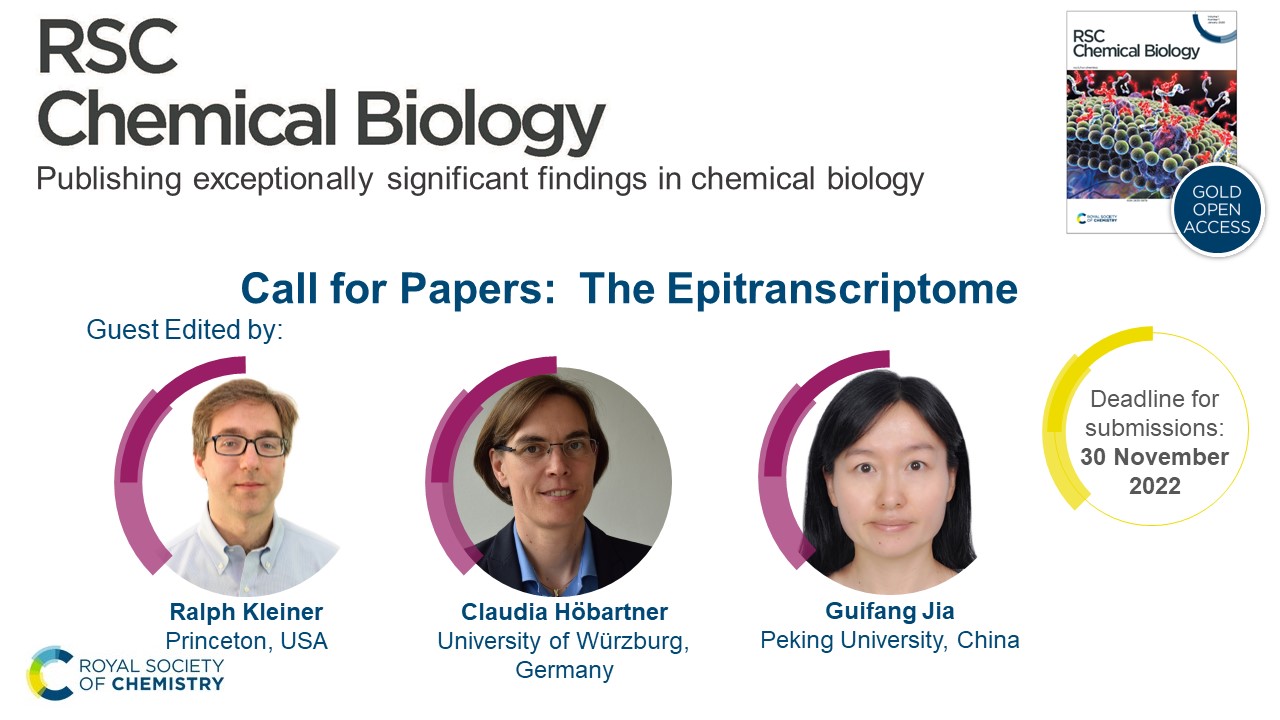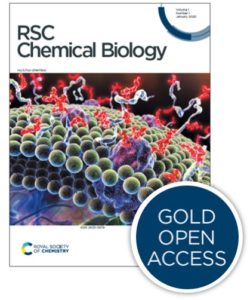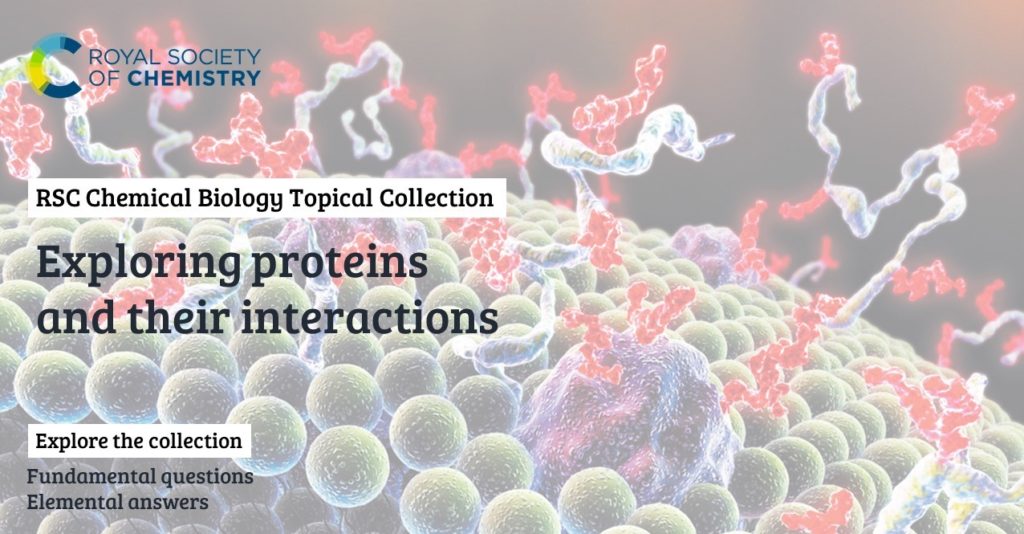
RSC Chemical Biology is delighted to welcome papers for its latest online themed collection on ‘The Epitranscriptome’, guest edited by Ralph Kleiner (Princeton, USA), Claudia Höbartner (University of Würzburg, Germany) and Guifang Jia (Peking University, China).
Scope
Contributions are welcome which investigate structural and functional consequences of native RNA modifications in vitro and in living systems. New chemical and chemoenzymatic methods for detection, validation, and characterization of epitranscriptomic modifications and their functions are welcome for this themed collection on emerging topics in epitranscriptomic research.
The deadline for submissions is 30 November 2022.
Submit to the collection now!
Promotion of the collection is scheduled for spring 2023, with articles published online as soon as they’re accepted.
Authors are welcome to submit original research in the form of a Communication or Full Paper. Articles can be submitted via our website: rsc.li/rsc-chembio. We would be grateful if upon submission you would be able to mention that your manuscript is intended for this themed collection in the “notes to the editor” box.
If you have any questions about the journal or the collection, I would be happy to answer them in reply to this email.
With kind regards,
| Ralph Kleiner
Princeton, USA |
Claudia Höbartner
University of Würzburg, Germany |
Guifang Jia
Peking University, China |
Explore all open calls for papers from RSC journals!
About RSC Chemical Biology
Led by Hiroaki Suga (University of Tokyo), RSC Chemical Biology is dedicated to publishing and disseminating the most exceptionally significant, breakthrough findings of interest to the chemical biology community. All submissions are handled by our experienced and internationally recognised Associate Editors. For more information on the journal, please visit the journal homepage.
As a gold open access journal, there are no barriers to accessing content and your research article will reach an international audience. Please note that the article processing charges are waived until mid-2022, so the journal is currently free to publish in.
RSC Chemical Biology is now indexed in the Directory of Open Access Journals (DOAJ), PubMed Central, Scopus and Web of Science: Emerging Sources Citation Index. Find out more about the journal and submit your work at rsc.li/rsc-chembio
Royal Society of Chemistry




